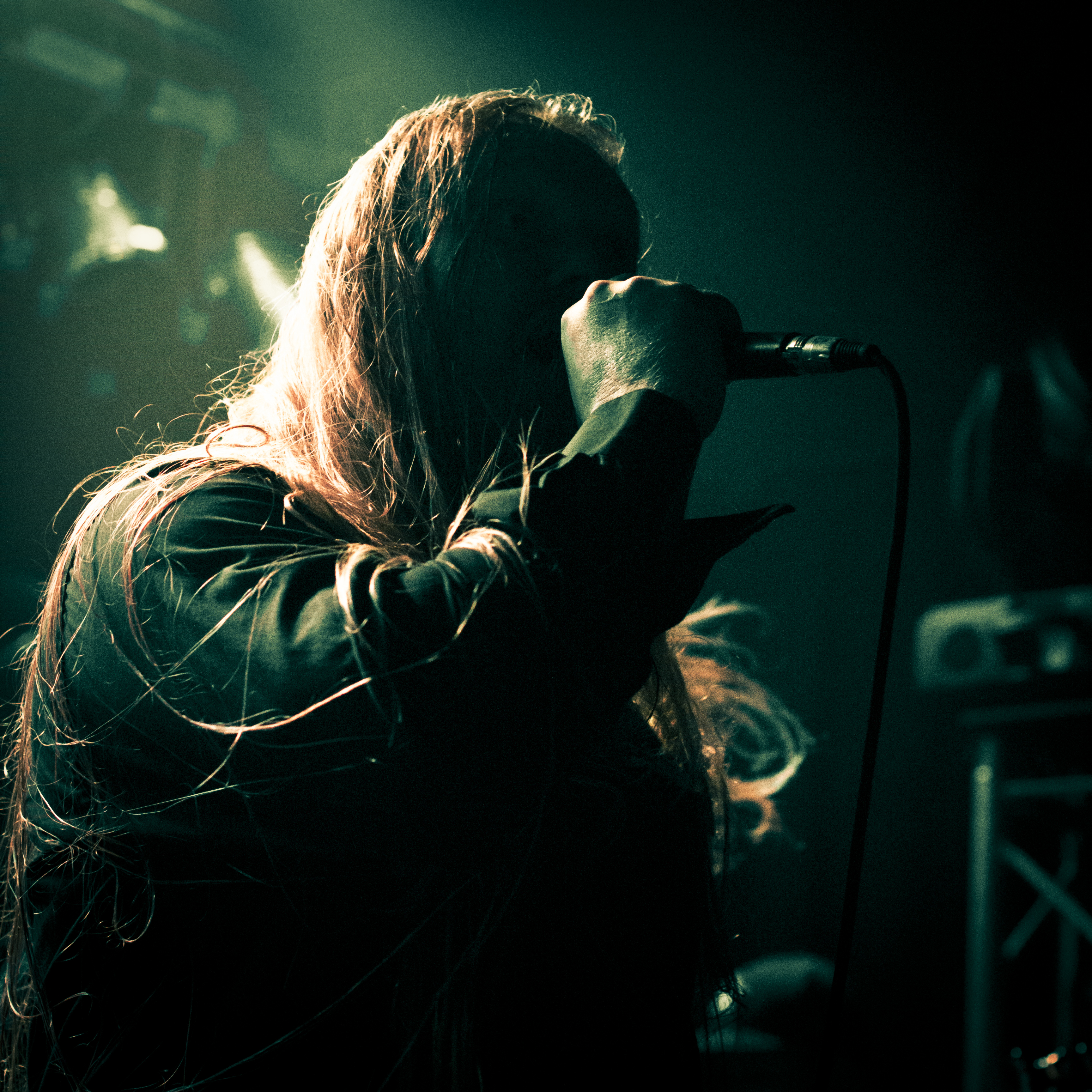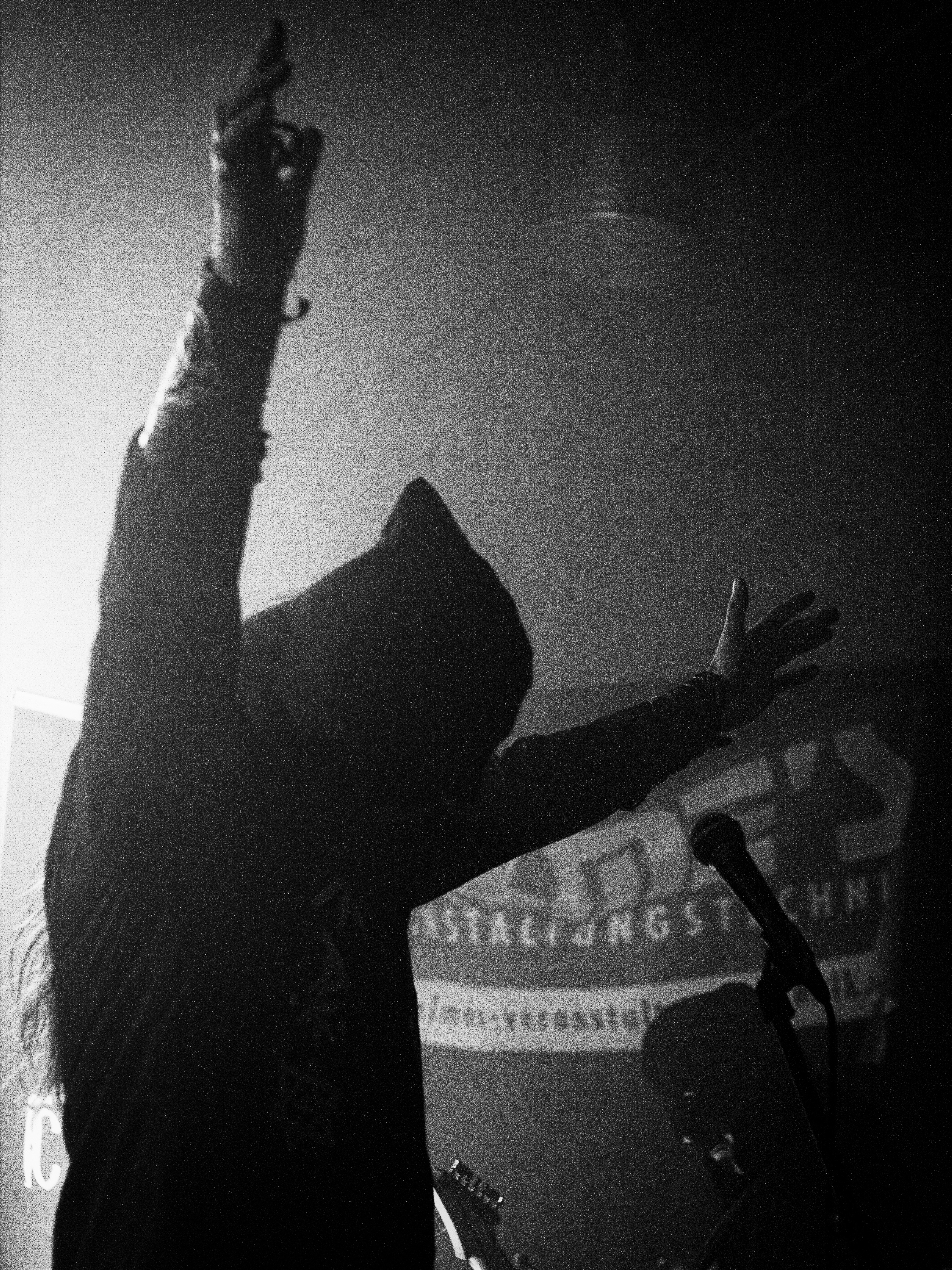|
The Defeat Of Satan
''The Defeat of Satan'' is an album by the Norwegian band Antestor. The album consists of their first two demos ''Despair'' (1993) and ''The Defeat of Satan'' (1991). The songs were remastered and remixed in 2003 and was published by the Norwegian label Momentum Scandinavia. The demos on this album are historical since they were one of the few Christian metal releases during the time when the black metal movement was developing significantly and drew media attention with violent actions such as the church burnings. Recording history The first part of the album comprises ''Despair'' demo's songs. Musically, the ''Despair'' songs showcase oppressive and sorrowful death/doom similar to that of than 1994's ''Martyrium'', albeit darker in atmosphere. ''Despair'' was released by Strawberry Records and printed 600 copies of it. The last song on the demo, "Jesus, Jesus Ver Du Hjå Meg" is a cover of an old Norwegian funeral hymn. Kjetil Molnes' vocals are mostly deep, guttural death gr ... [...More Info...] [...Related Items...] OR: [Wikipedia] [Google] [Baidu] |
Antestor
Antestor () is a Norwegian Christian extreme metal band formed in 1990 in Jessheim. Credited for starting the northern European Christian metal, Christian black metal scene,Bryzak, Michael. Liner notes of ''The Defeat of Satan'' album. 2003. Endtime Productions Antestor is the only Christian band to have an album released by Cacophonous Records, which has also released records by bands such as Dimmu Borgir, Sigh (band), Sigh, and Cradle of Filth. The band's only release on Cacophonous, ''The Return of the Black Death'', proved influential for the Christian black metal movement, and has sold over 10,000 copies. In the late 1990s they dubbed their musical style as "sorrow metal" rather than black metal because the black metal movement was publicly affiliated with Theistic Satanism, Satanism in Norway. According to ''HM (magazine), HM'' magazine, the progressive elements on the debut album, ''Martyrium (album), Martyrium'', were possibly ahead of their time in the Norwegian extreme ... [...More Info...] [...Related Items...] OR: [Wikipedia] [Google] [Baidu] |
Thrash Metal
Thrash metal (or simply thrash) is an extreme subgenre of heavy metal music characterized by its overall aggression and often fast tempo.Kahn-Harris, Keith, ''Extreme Metal: Music and Culture on the Edge'', pp. 2–3, 9. Oxford: Berg, 2007, . The songs usually use fast percussive beats and low-register guitar riffs, overlaid with shredding-style lead guitar work. The lyrical subject matter often includes criticism of The Establishment and concern over environmental destruction, and at times shares a disdain for Christian dogma with that of black metal. The language is typically direct and denunciatory, an approach borrowed from hardcore punk. The genre emerged in the early 1980s as musicians began fusing the double bass drumming and complex guitar stylings of the new wave of British heavy metal (NWOBHM) with the speed and aggression of hardcore punk. Philosophically, thrash metal developed as a backlash against both the conservatism of the Reagan Era and the much more moder ... [...More Info...] [...Related Items...] OR: [Wikipedia] [Google] [Baidu] |
Black Metal Compilation Albums
Black is a color which results from the absence or complete absorption of visible light. It is an achromatic color, without hue, like white and grey. It is often used symbolically or figuratively to represent darkness. Black and white have often been used to describe opposites such as good and evil, the Dark Ages versus Age of Enlightenment, and night versus day. Since the Middle Ages, black has been the symbolic color of solemnity and authority, and for this reason it is still commonly worn by judges and magistrates. Black was one of the first colors used by artists in Neolithic cave paintings. It was used in ancient Egypt and Greece as the color of the underworld. In the Roman Empire, it became the color of mourning, and over the centuries it was frequently associated with death, evil, witches, and magic. In the 14th century, it was worn by royalty, clergy, judges, and government officials in much of Europe. It became the color worn by English romantic poets, businessmen ... [...More Info...] [...Related Items...] OR: [Wikipedia] [Google] [Baidu] |
Thrash Metal Compilation Albums
Thrash may refer to: *Thrashing (computer science), where increasing resources are used to do a decreasing amount of work *Thrash (surname) *Thrash, mascot of the Atlanta Thrashers *''Thrash Rally'', a top-down perspective rally racing video game developed by ADK *A synonym for a Strike (attack) Music *Thrash metal, a riff-driven subgenre of heavy metal **Crossover thrash, a fusion of thrash metal with hardcore punk **Groove metal, a subgenre of heavy metal also known as post-thrash *Thrashcore, a subgenre of hardcore punk **Bandana thrash, a subgenre of thrashcore *Thrash, the nickname of British electronic musician, record producer and remixer Kris Weston *''Thrash Anthems'', a 2007 compilation album released by thrash metal band Destruction *"Thrash Unreal", a 2007 single by punk group Against Me! *''Thrash Zone'', a 1989 album by the American crossover thrash band D.R.I. Places * Thrash, West Virginia, former unincorporated community in Braxton County, West Virginia, Unite ... [...More Info...] [...Related Items...] OR: [Wikipedia] [Google] [Baidu] |
Death-doom Compilation Albums
Death-doom is an extreme subgenre of heavy metal. It combines the slow tempos and pessimistic or depressive mood of doom metal with the deep growling vocals and double kick drumming of death metal. The genre emerged in the late-1980s and gained a certain amount of popularity during the 1990s, but had become less common by the turn of the 21st century.Tracey, Ciaran (March 2006). "Doom/Death: United in Grief" , ''Terrorizer'' #142, pp.54-55. In turn, death-doom gave rise to the closely related genre of funeral doom as well as to the more melodic, gloomy and romantic gothic metal. History The first signs of the death/doom genre originated in the mid-1980s when early progenitors like Dream Death began to mix traditional doom metal with the sounds of the nascent death metal scene.Bardin, Olivier (May 2006). "Forgotten Doom: Raiders of the Lost Art", ''Terrorizer'' #144, p.56 Early records in 1990s by such bands as Autopsy, Winter, Paradise Lost, My Dying Bride and Anathema combined ... [...More Info...] [...Related Items...] OR: [Wikipedia] [Google] [Baidu] |
2003 Compilation Albums
3 (three) is a number, numeral and digit. It is the natural number following 2 and preceding 4, and is the smallest odd prime number and the only prime preceding a square number. It has religious or cultural significance in many societies. Evolution of the Arabic digit The use of three lines to denote the number 3 occurred in many writing systems, including some (like Roman and Chinese numerals) that are still in use. That was also the original representation of 3 in the Brahmic (Indian) numerical notation, its earliest forms aligned vertically. However, during the Gupta Empire the sign was modified by the addition of a curve on each line. The Nāgarī script rotated the lines clockwise, so they appeared horizontally, and ended each line with a short downward stroke on the right. In cursive script, the three strokes were eventually connected to form a glyph resembling a with an additional stroke at the bottom: ३. The Indian digits spread to the Caliphate in the 9th ... [...More Info...] [...Related Items...] OR: [Wikipedia] [Google] [Baidu] |
Antestor Albums
Antestor () is a Norwegian Christian extreme metal band formed in 1990 in Jessheim. Credited for starting the northern European Christian black metal scene,Bryzak, Michael. Liner notes of ''The Defeat of Satan'' album. 2003. Endtime Productions Antestor is the only Christian band to have an album released by Cacophonous Records, which has also released records by bands such as Dimmu Borgir, Sigh, and Cradle of Filth. The band's only release on Cacophonous, ''The Return of the Black Death'', proved influential for the Christian black metal movement, and has sold over 10,000 copies. In the late 1990s they dubbed their musical style as "sorrow metal" rather than black metal because the black metal movement was publicly affiliated with Satanism in Norway. According to '' HM'' magazine, the progressive elements on the debut album, ''Martyrium'', were possibly ahead of their time in the Norwegian extreme metal scene. The group has gone through several line-up changes over the years, a ... [...More Info...] [...Related Items...] OR: [Wikipedia] [Google] [Baidu] |
Industrial Music
Industrial music is a genre of music that draws on harsh, mechanical, transgressive or provocative sounds and themes. AllMusic defines industrial music as the "most abrasive and aggressive fusion of rock and electronic music" that was "initially a blend of avant-garde electronics experiments (tape music, musique concrète, white noise, synthesizers, sequencers, etc.) and punk provocation". The term was coined in the mid-1970s with the founding of Industrial Records by members of Throbbing Gristle and Monte Cazazza. While the genre name originated with Throbbing Gristle's emergence in the United Kingdom, artists and labels vital to the genre also emerged in the United States and other countries. The first industrial artists experimented with noise and aesthetically controversial topics, musically and visually, such as fascism, sexual perversion, and the occult. Prominent industrial musicians include Throbbing Gristle, Monte Cazazza, SPK, Boyd Rice, Cabaret Voltaire, and Z'E ... [...More Info...] [...Related Items...] OR: [Wikipedia] [Google] [Baidu] |
Death Metal
Death metal is an extreme subgenre of heavy metal music. It typically employs heavily distorted and low-tuned guitars, played with techniques such as palm muting and tremolo picking; deep growling vocals; aggressive, powerful drumming, featuring double kick and blast beat techniques; minor keys or atonality; abrupt tempo, key, and time signature changes; and chromatic chord progressions. The lyrical themes of death metal may include slasher film-style violence,Moynihan, Michael, and Dirik Søderlind (1998). Lords of Chaos (2nd ed.). Feral House. , p. 27 political conflict, religion, nature, philosophy, true crime and science fiction. Building from the musical structure of thrash metal and early black metal, death metal emerged during the mid-1980s. Bands such as Venom, Celtic Frost, Slayer, and Kreator were important influences on the genre's creation. Possessed, Death, Necrophagia, Obituary, Autopsy, and Morbid Angel are often considered pioneers of the genre. In t ... [...More Info...] [...Related Items...] OR: [Wikipedia] [Google] [Baidu] |
Martyrium (album)
''Martyrium'' is the first recorded and second released studio album by the Norwegian unblack metal band Antestor. It is one of the earliest Christian extreme metal albums released in Norway. Recorded in 1994, ''Martyrium'' was not immediately released, though bootleg copies of the album were printed in 1997 by Morphine Records. It then gained a cult following among a small audience until it was officially released in the year 2000 by Endtime Productions.Michael Bryzak. Liner notes of ''The Defeat of Satan / Despair''. Endtime Productions. 2003. Recording history Originally Torodd Fuglesteg, head of the infamous Arctic Serenades label, sent Antestor to studio to record ''Martyrium''. At the time having problems with signing the band Groms for Arctic Serenades' roster, Fuglesteg said: "I was also in touch with Antestor at that time and I sent them into studio to do their Martyrium album. This album was later released through another label. I regarded, and still regard, Antestor as mu ... [...More Info...] [...Related Items...] OR: [Wikipedia] [Google] [Baidu] |
Unblack Metal
Unblack metal (also known as Christian black metal) is a religious philosophy and subgenre within black metal, inheriting several characteristics of it, such as the melody, the lyrics and the aesthetics ( corpse paint), whose artists either directly oppose the Satanism prevalent in most black metal, or promote Christianity in their lyrics and imagery. Unblack metal artists are controversial within the black metal subculture, because black metal's pioneers, especially those of the Second Wave, were anti-Christian. It is also suggested that Christianity contradicts black metal's dark nature and the individualistic and misanthropic ideals of many bands. The exact beginning of the unblack metal movement is disputed. The Australian band Horde's 1994 studio album ''Hellig Usvart'' brought the concept and the term ''holy unblack metal'' (a word play on Darkthrone's slogan "unholy black metal" used on the albums ''A Blaze in the Northern Sky'' and ''Under a Funeral Moon'') to media atte ... [...More Info...] [...Related Items...] OR: [Wikipedia] [Google] [Baidu] |





